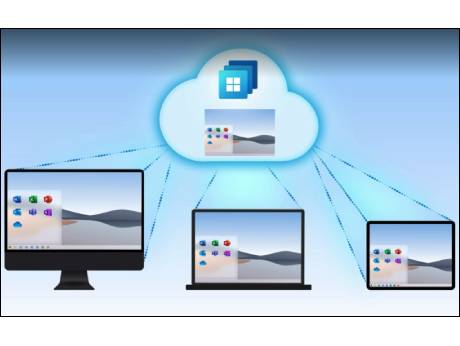
July 29 2021: Ten years after it converted its office suite into a cloud-based pay and use utility, Office 365, Microsoft is doing likewise with its operating system, Windows.
Windows 365 is to be a cloud service that delivers a new way to experience Windows, streaming personalized apps, settings, and content from the Microsoft cloud to any device. Users select Windows 10 or Windows 11, once it is generally available later this calendar year, along with a configuration of processing power, storage and memory that suits their needs. They then access their Cloud PC through a native application or web browser on any device, from anywhere with an internet connection.
Windows is already accessible in the cloud via Azure Virtual Desktop, which offers customers flexibility to create and run their own virtualization service. Windows 365 is a new virtualization technology for Windows that is easy to set up and deploy for today’s login-from-anywhere, mobile and elastic workforces.
“Windows 365 is really going to make a huge difference for organizations that wanted to try virtualization for various reasons but could not – maybe it was too costly, too complex or they didn’t have the expertise in house to do it,” said Wangui McKelvey, general manager of Microsoft 365, who works from a home office in Atlanta, Georgia.
With Windows 365, she added, IT admins can manage and deploy Cloud PCs using the same tools they use today to manage physical PCs.
The pandemic firecracker
Windows 365 was in the works before COVID-19 sent companies around the world on a scramble to secure solutions to support employees suddenly forced to work from home, but “what really put the firecracker behind it was the pandemic, it accelerated everything,” McKelvey said. She explained that customers were asking, “’How do we create an experience for people that makes them still feel connected to the company without the physical presence of being there?”
In this new world of Windows 365, remote workers flip the lid on their laptop, bootup the family workstation or clip a keyboard onto a tablet, launch a native app or modern web browser and login to their Windows 365 account. From there, their Cloud PC appears with their background, apps, settings and content just as they left it when they last were last there – in the office, at home or a coffee shop.